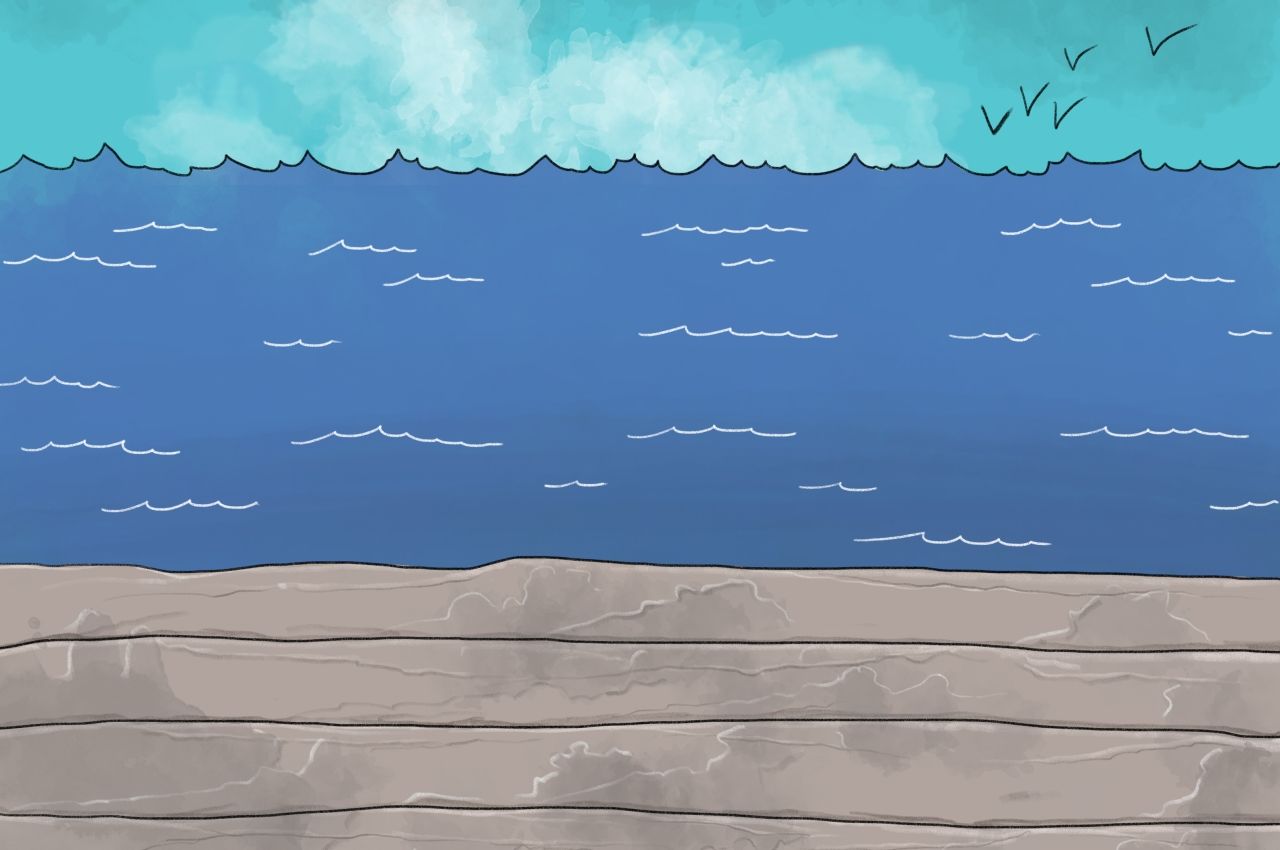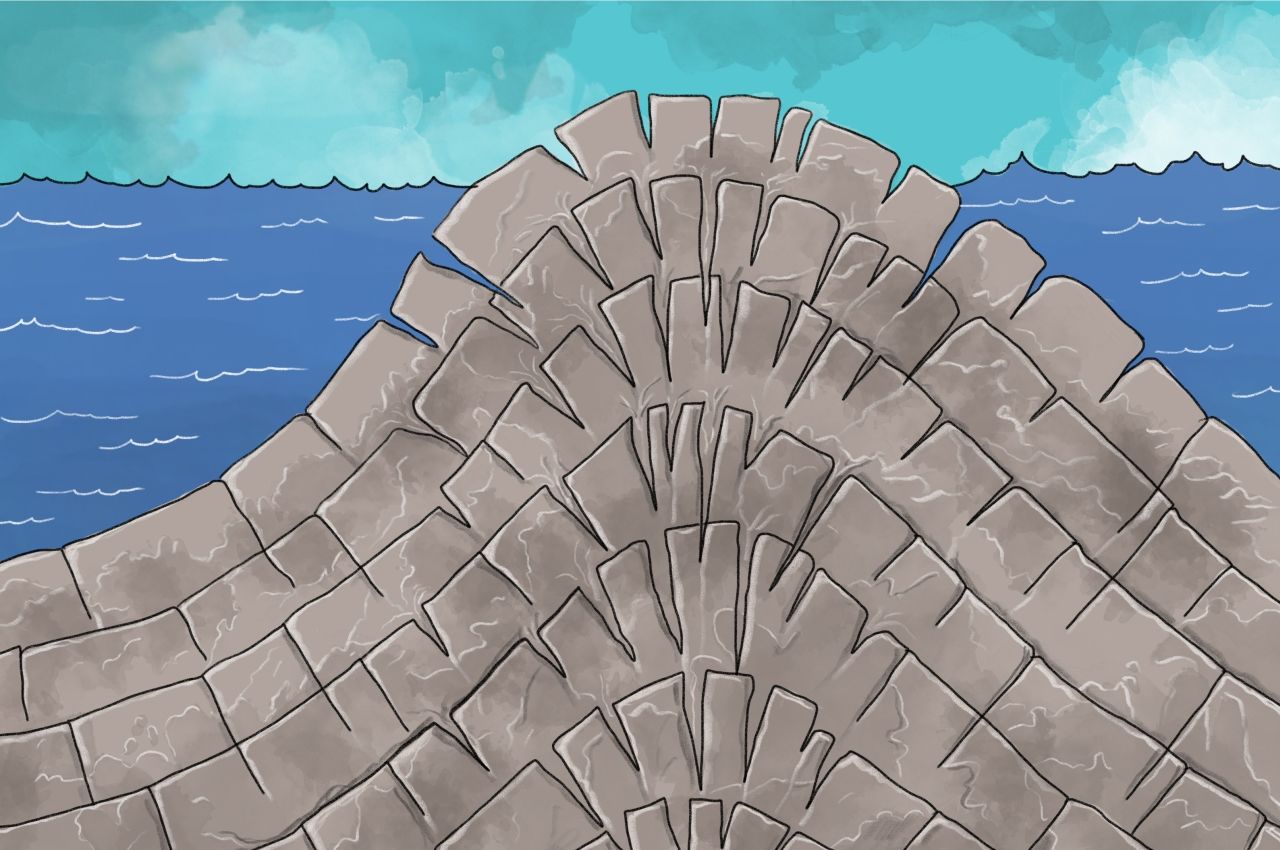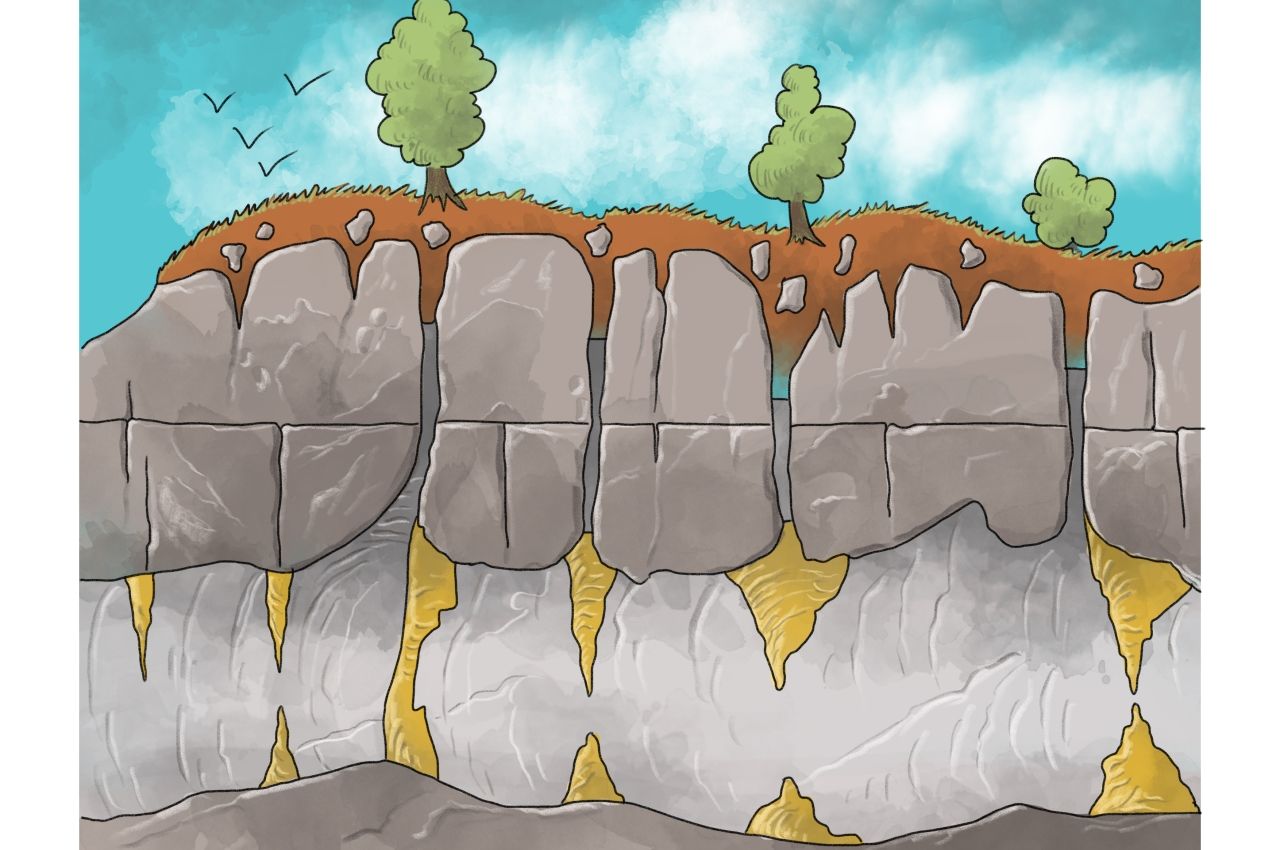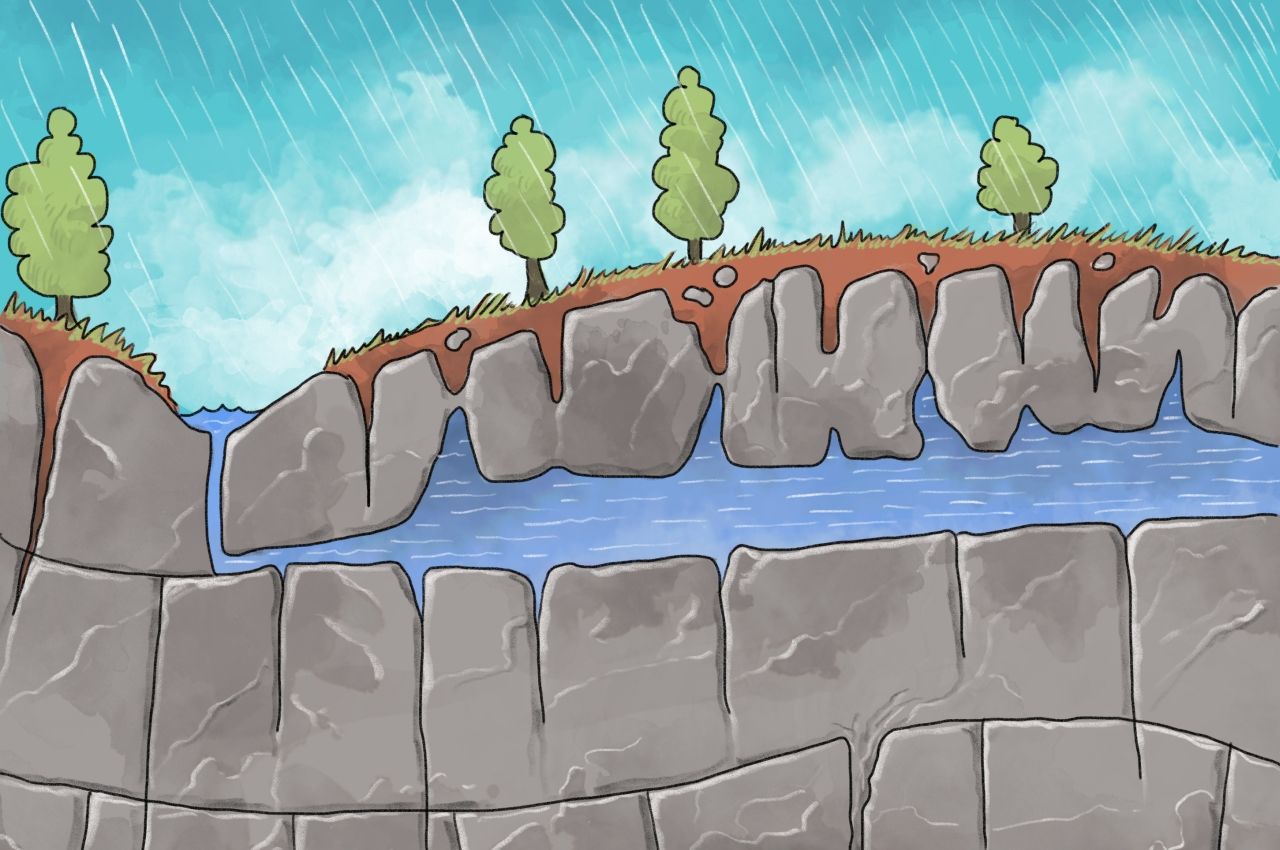Geology
Be it the tiniest, tranquil drop of water or the tumultuous river, the fabulous work of water lies at the source of Han's fascinating underground world. The gigantic Cave chambers and stunning concretions combine to form an exceptional work of nature!

Nature's geological creation
Approximately 385 million years ago, the limestone rock in which the Cave of Han was carved out was formed at the bottom of the sea, which at the time, covered the whole area.
It is constituted by the accumulations of the remains of marine organisms that lived there: corals, shells... These sediments were deposited in successive horizontal layers, called strata and separated by planes of parting; these are termed stratification planes.

Birth of the limestone massif
During the Hercynian orogeny, which occurred approximately 300 million years ago, the area's subsoil was profoundly altered. As a result of movements of the Earth's crust, the layers of limestone rock were lifted then folded, losing their horizontal position. This created a mountain range, that was then entirely eroded until it became a plain once again. This happened during the Cretaceous, 130 million years ago.
At this time, other tectonic movements loosened the fault lines, which opened them, allowing the water to infiltrate them and initiate the ghost-rock karstification (the limestone is dissolved and the area flooded, but the process does not form a cave that is big enough to be explored).

Ghost-rock karstification and erosion
At a subterranean level, the limestone has partially been disolved, creating what we call ghost-rock karstification: the rock is still there but has partially lost its substance and consequently its solidity.
The limestone rocks have undergone a number of different types of erosion and the water running through the network of fissures and stratification planes has carried away the ghost-rocks, creating voids.
Other phenomena contribute to cave formation and enlarging the planes and fractures: dissolution or chemical corrosion of the limestone (limestone dissolves in acid water) and physical or mechanical erosion, when the flowing water (that contains solid particles) grinds away at the rock.
As time goes by, the rivers dig deeper into their valleys and the phreatic table drops deeper underground, freeing up galleries that were formerly underwater. And it is precisely in such galleries that concretions are formed.
Drop by drop formation
When it rains, the rainwater seeps through the layer of humus where it absorbs carbon dioxide, becoming slightly acidic. When the raindrops reach the bedrock, they continue their journey downwards throught the fissures in the rock. Under the action of the slightly acidic raindrops, the limestone rock is dissolved as the drops continues their way down, carrying away a tiny fragment of limestone...
When the raindrops finally reach a gallery or chamber ceiling, which is less rich in carbon dioxide than the air that is confined to the surface, they can no longer carry the same amount of limestone.They deposit the excess on the cave floor or ceiling in the shape of tiny crystals of calcite.
This is how stalactites, stalagmites and a variety of concretions in all shapes and sizes are formed: pillars, soda straws, draperies (also curtains), rimstone dams...

Slowly but surely
Concretions have widely varying growth rates, depending on a number of factors: purity of the limestone, degree of rock fissuration, temperature, amount of rainfall, vegetation...
On average, the fastest growth rate is in the range of 1 millimeter per year. Concretions are primarily formed during temperate periods. Some of the concretions you can admire in the Cave of Han are at least 400.000 years old, while others were formed during the last 10.000 years, during the last ice age.
Concretions come in a number of colours. Limestone is pure white but clay or other organic particles transported by the water can give it a beige, brown or grey colour...

